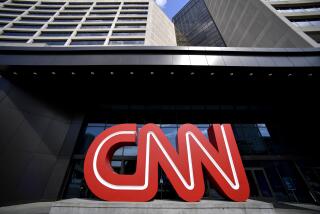Young Disputes Charge of Disclosure Violation
- Share via
Former Assemblyman Bruce E. Young, disputing charges that he failed to comply with state financial disclosure laws, testified Tuesday that he did not have to report $10,000 in earnings for work on behalf of a Canadian cable television firm in 1981 because he had returned $100 at the request of a Sacramento lobbyist.
Young’s testimony in his third day on the witness stand in his public corruption trial in Los Angeles federal court brought him into direct conflict with the lobbyist, former state Sen. Dennis Carpenter (R-Newport Beach), who denied in an interview that the incident took place.
Showing signs of exhaustion and once leaving the witness stand to search for an aspirin, Young testified that Carpenter “approached” him in 1981 and explained that Rogers Cable Systems of Toronto wanted the alleged $100 refund to avoid having the $10,000 payment to Young reported.
Previous testimony in Young’s trial has established that the $10,000 payment from Rogers Cable was laundered through Carpenter’s public relations firm, Carpenter & Spencer, into a fictitious company called JMW Associates before it was passed to Young.
Young’s description of giving Carpenter $100 in cash came when he was asked about a 1981 letter he wrote to J. Murray Wilson, one of Carpenter’s employees, saying that he was enclosing a check for $200 to JMW Associates as an overpayment for the “marketing consultation” provided by his company, Young Thinking Inc.
“Toward the end of 1981, Carpenter approached me,” Young said. “He explained that if they (Rogers) paid a client over $10,000, they would be besieged in Toronto by calls from the media, and they didn’t want the publicity no matter how good a job I was doing for them.”
Young said Carpenter first suggested a $200 refund and Young said he would “think about it.” After agreeing to refund some money as an overpayment, Young testified, he wrote the letter to Wilson, but never sent it because Carpenter suggested that he simply pay him $100 in cash.
“He said, ‘Just give me $100 in cash’,” Young said. “ ‘I’ll leave it on the books, but don’t report it.’ ”
Contacted in Sacramento, Carpenter, who once was scheduled to testify as a prosecution witness in the Young case, denied that he ever spoke with Young about an overpayment.
“No such conversation took place,” Carpenter said.
In his testimony Tuesday, a defense follow-up to cross-examination last week, Young was asked by defense lawyer George Walker to give the jury his views on the propriety of income received from the Canadian television firm as well as a Los Angeles cable TV company and convicted political corrupter W. Patrick Moriarty.
Mail Fraud Charges
Young, 40, a Democratic Assemblyman from Norwalk from 1976 to 1984, is charged with 28 counts of mail fraud in connection with the alleged failure to report $22,000 in earnings from the Los Angeles cable firm, Falcon Communications, and free use of a leased Ford Bronco provided by Moriarty.
Moriarty, now serving a seven-year prison term for corruption, once headed the largest fireworks company in the nation, and Young crusaded for fireworks legislation while acting as a consultant to the politically powerful Orange County businessman.
But Young denied Tuesday that the use of the Bronco had any influence on his work on the fireworks legislation.
“Absolutely not,” Young said.
Young also said he believed that there was no need to report his income from Falcon Communications because it came from several different corporate “entities” which he regarded as separate companies.
Campbell Testifies
Also testifying Tuesday was Sen. William Campbell (R-Hacienda Heights), the sponsor of the 1981 fireworks legislation which Young championed in the Assembly. Campbell said he introduced the legislation at Moriarty’s request, but did so only because he believed that the pro-fireworks measure was in the best interests of Californians.
The trial continues today with Young still on the witness stand. The case is expected to be presented to the jury sometime next week.
More to Read
Get the L.A. Times Politics newsletter
Deeply reported insights into legislation, politics and policy from Sacramento, Washington and beyond. In your inbox twice per week.
You may occasionally receive promotional content from the Los Angeles Times.









